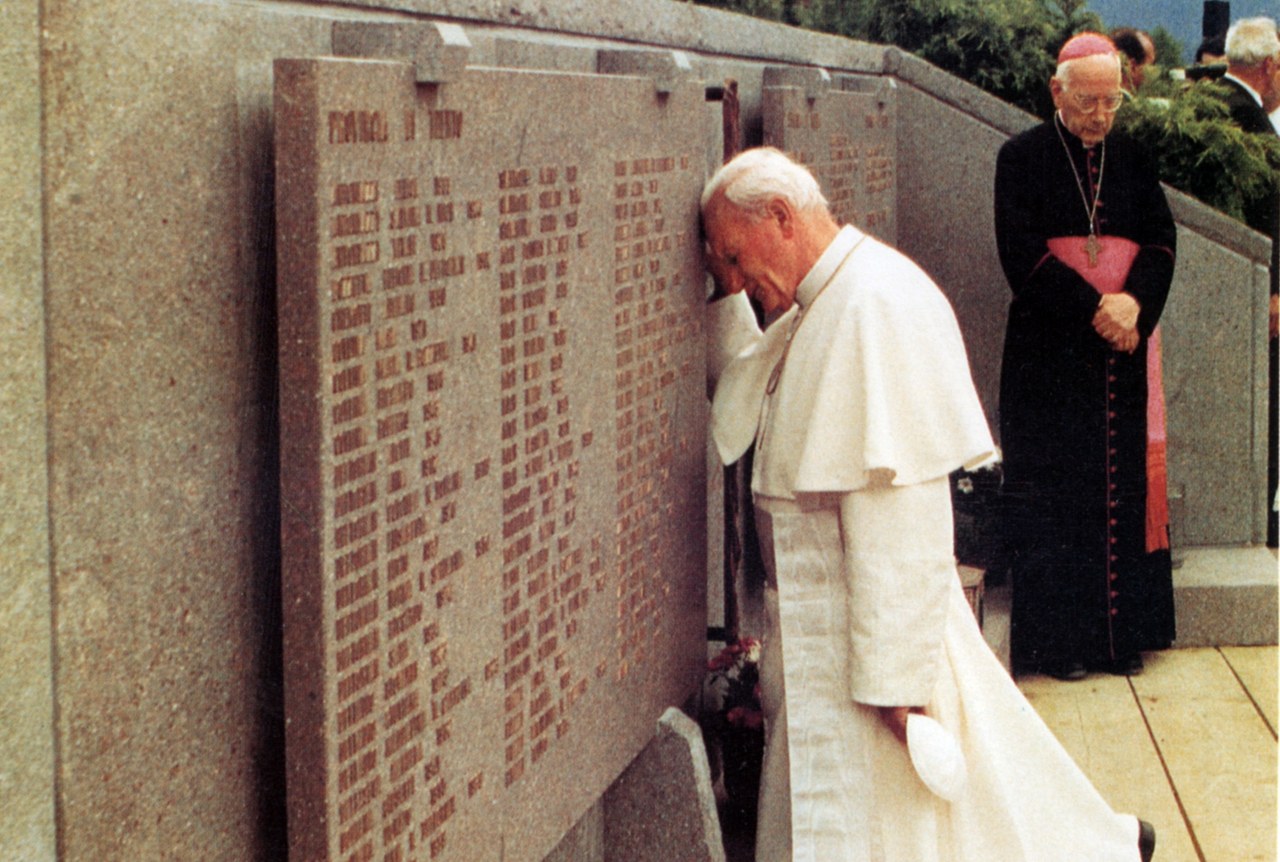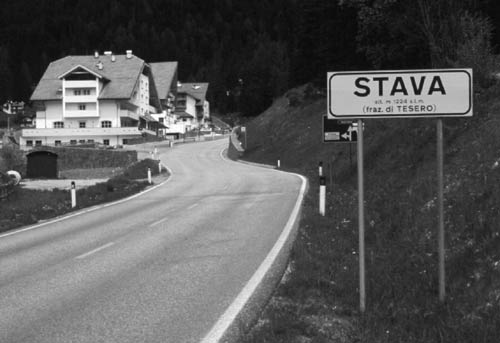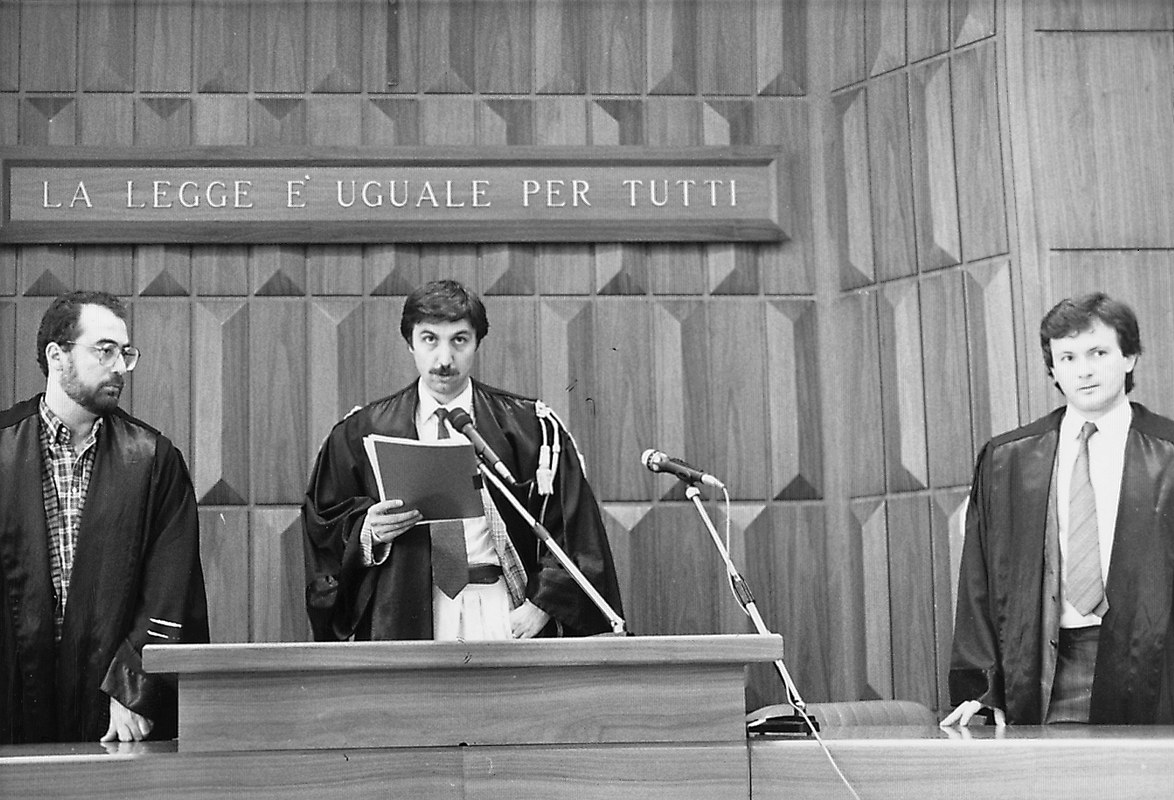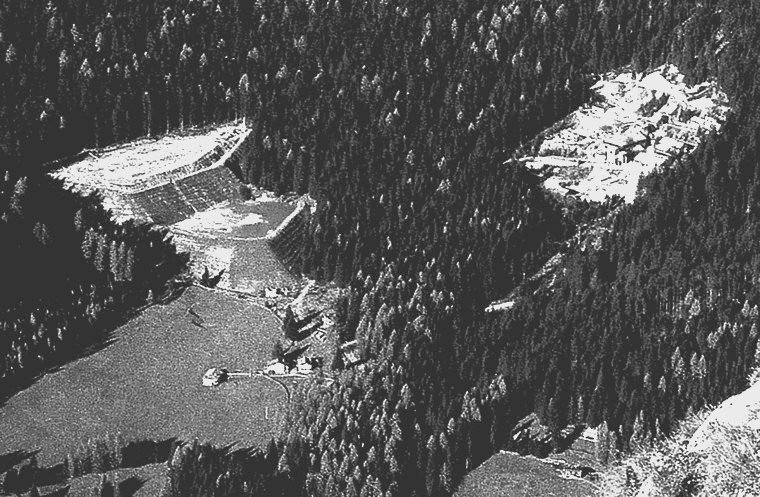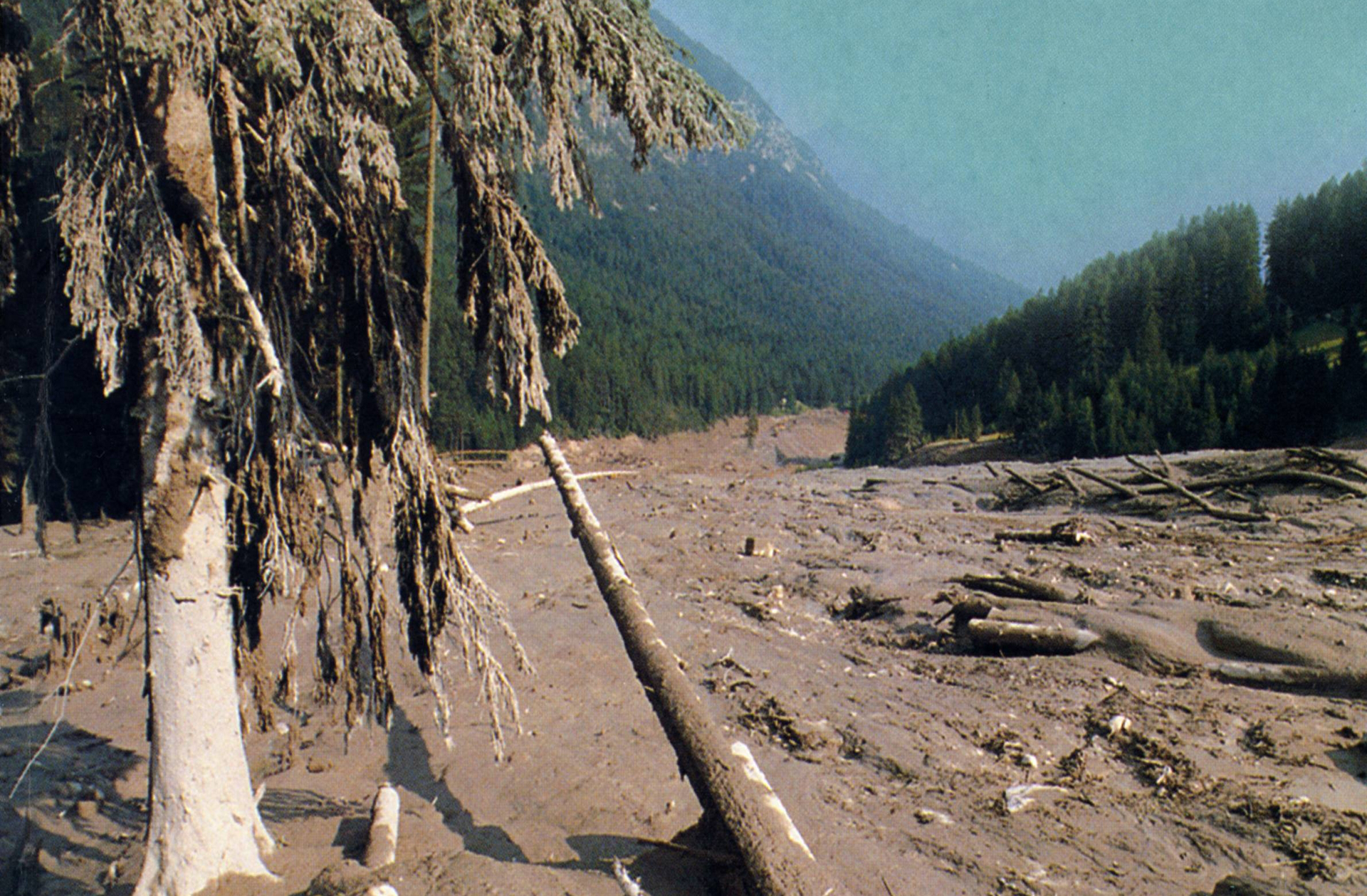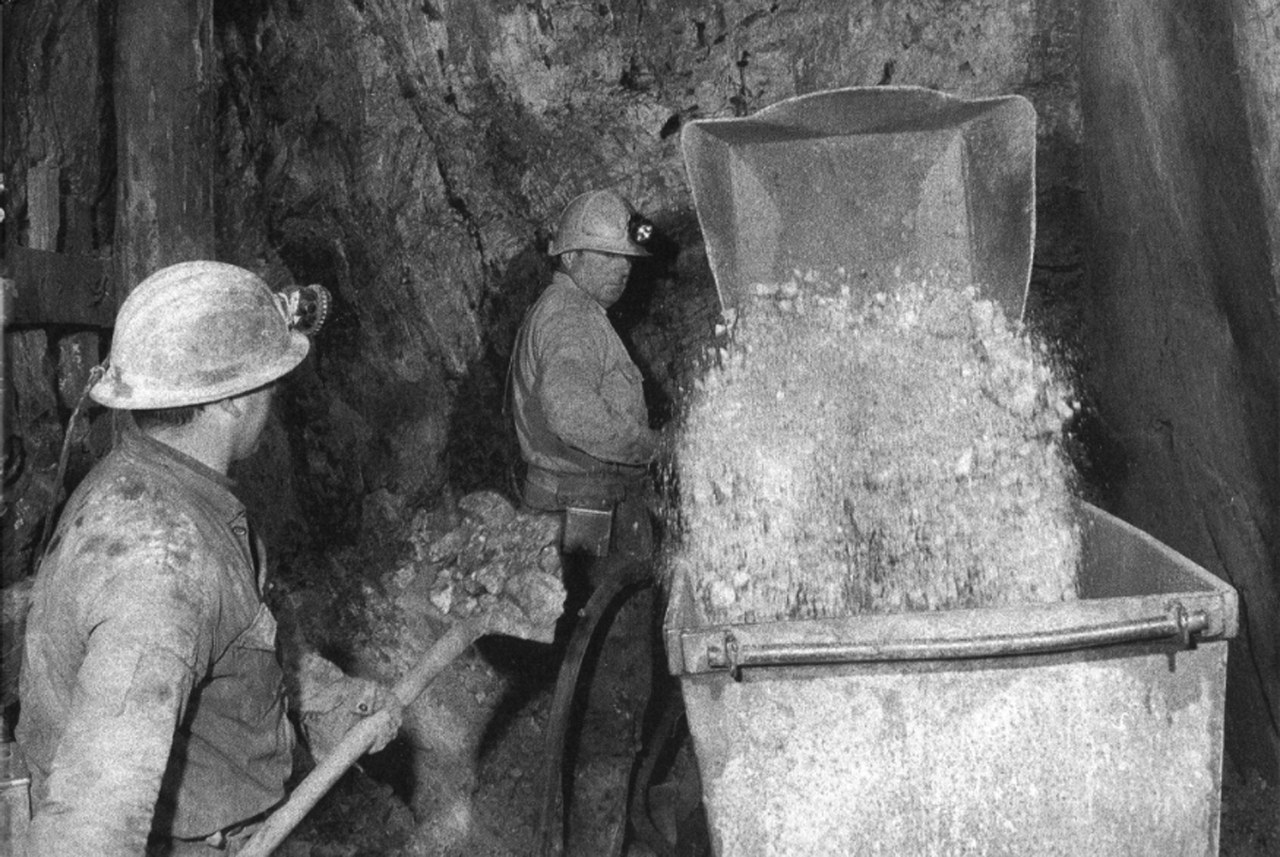The Pope’s visit
[caption id="attachment_1600" align="alignright" width="400"] Many minutes spent gripping the Cross, symbolizing mankind crushed by unbearable pain, shared deep down inside.[/caption] On 17th July 1988, Pope John Paul II paid a visit to the sites of the Stava catastrophe. The Pontiff stood and prayed in the Church of San Leonardo and paid a visit to the cemetery of the victims. After kneeling down for some timeless minutes gripping the Cross, he had words of comfort for each of the relatives gathered around the three mass graves where the 71 unidentified bodies had been buried. Afterwards the Pope went to Stava where

